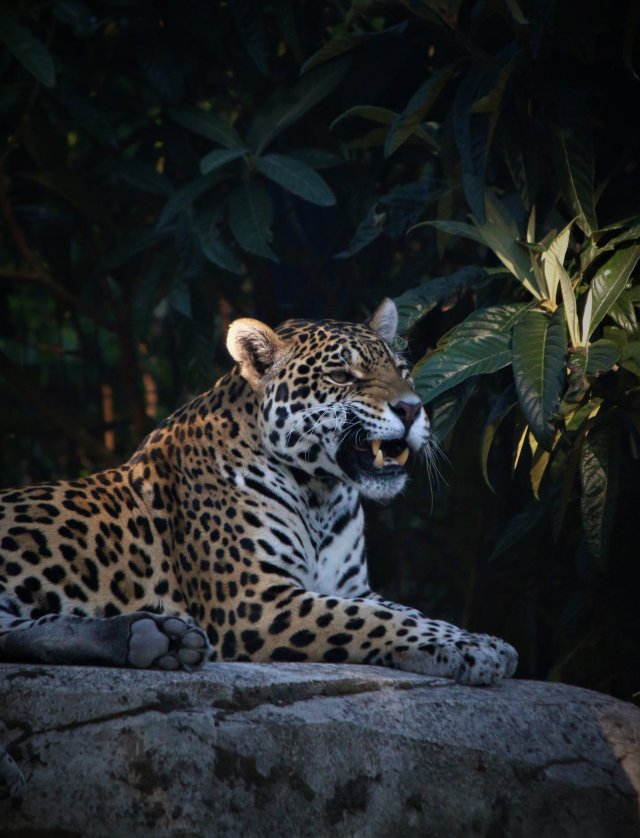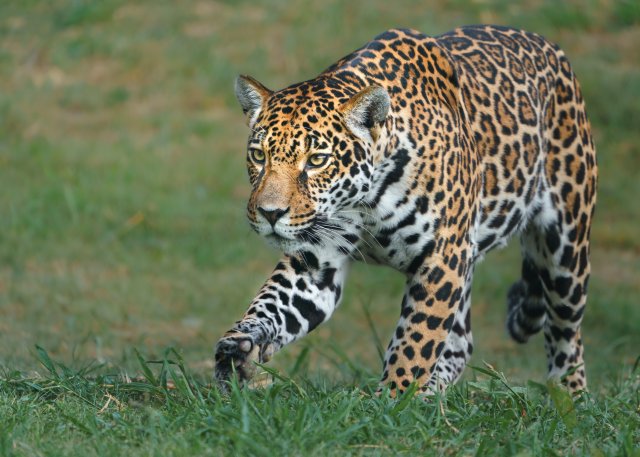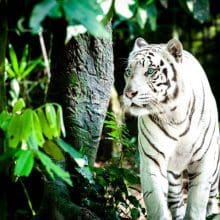12 Amazing Adaptations That Make the Majestic Jaguar a Top Predator
The Majestic Jaguar
The jaguar, scientifically known as Panthera onca, is a magnificent big cat that roams the dense forests and grasslands of the Americas. With its muscular build, powerful jaws, and distinctive rosette patterns, the jaguar is not only a symbol of strength and beauty but also an apex predator in its habitat. In this article, we will explore twelve amazing adaptations that make the jaguar a top predator.
1. Powerful Bite
The jaguar possesses one of the strongest bites among all big cats. Its jaw muscles are incredibly powerful, allowing it to deliver a crushing force that can pierce through the thick skulls and shells of its prey. With a bite force of around 2,000 pounds per square inch, the jaguar can easily immobilize its prey, making it a formidable predator.
2. Stealth and Camouflage
One of the jaguar’s most remarkable adaptations is its ability to blend seamlessly into its surroundings. Its coat is covered in rosette patterns that resemble the dappled sunlight filtering through the trees, making it nearly invisible to its prey. This camouflage allows the jaguar to stalk its prey undetected, increasing its chances of a successful hunt.
3. Exceptional Climbing Skills
Majestic Jaguar: Unlike many other big cats, the jaguar is an excellent climber. Its muscular build and retractable claws enable it to scale trees effortlessly. This adaptation gives the jaguar an advantage when hunting, as it can ambush its prey from above or escape danger by seeking refuge in the treetops.
4. Adaptability to Different Habitats
The jaguar is highly adaptable and can thrive in a variety of habitats, including rainforests, swamps, grasslands, and even deserts. This adaptability allows the jaguar to expand its range and find suitable prey in different environments, making it a versatile predator.
5. Excellent Swimmer
Unlike many other big cats, the jaguar is a proficient swimmer. It has a streamlined body and powerful limbs that enable it to navigate through water with ease. This adaptation allows the jaguar to hunt aquatic prey, such as fish, turtles, and caimans, giving it a diverse diet.
6. Ambush Hunting Strategy
The jaguar is a master of ambush hunting. It patiently waits in dense vegetation or near water sources, using its camouflage to remain hidden. When the perfect moment arrives, the jaguar launches a surprise attack, using its powerful bite to deliver a fatal blow to its prey. This hunting strategy ensures a high success rate for the jaguar.
7. Strong and Agile Body
The jaguar has a robust and muscular body, which allows it to overpower and subdue large prey. Its strong forelimbs and shoulders provide the necessary strength for tackling and bringing down animals much larger than itself. Additionally, the jaguar’s agility enables it to navigate through dense vegetation and pursue fast-moving prey.
8. Adapted Teeth for Meat Consumption
The jaguar has sharp and robust teeth that are specifically adapted for tearing through flesh and crushing bones. Its canines are long and sharp, ideal for delivering a killing bite to the neck or skull of its prey. The jaguar’s teeth allow it to efficiently consume meat, ensuring it obtains the necessary nutrients for survival.
9. Territorial Behavior
Jaguars are solitary animals that mark and defend their territories. By scent marking and vocalizing, they communicate their presence to other jaguars, reducing the likelihood of territorial disputes. This territorial behavior ensures that the jaguar has access to sufficient prey and minimizes competition with other predators.
10. Adapted Vision and Hearing
The jaguar has excellent vision, particularly in low light conditions. Its eyes are adapted to capture even the slightest movements, allowing it to spot prey from a distance. Additionally, the jaguar has highly sensitive hearing, enabling it to detect the sounds of potential prey or approaching danger.
11. Efficient Digestive System
The jaguar has a highly efficient digestive system that allows it to extract maximum nutrition from its prey. Its stomach can expand to accommodate large meals, and its digestive enzymes are specifically adapted to break down meat. This efficient digestion ensures that the jaguar can extract the necessary energy from its food sources.
12. Conservation Status
Despite its incredible adaptations, the jaguar faces numerous threats to its survival. Habitat loss, poaching, and conflicts with humans are major challenges for jaguar populations. According to the International Union for Conservation of Nature (IUCN), the jaguar is currently listed as “Near Threatened” on the Red List of Threatened Species. Conservation efforts are crucial to protect this majestic predator and ensure its long-term survival.
Summary
Majestic Jaguar: The jaguar’s adaptations make it a top predator in its habitat. Its powerful bite, stealth and camouflage, exceptional climbing skills, adaptability to different habitats, swimming ability, ambush hunting strategy, strong and agile body, adapted teeth for meat consumption, territorial behavior, adapted vision and hearing, efficient digestive system, and conservation status all contribute to its success as an apex predator. However, the jaguar’s survival is threatened by various factors, highlighting the importance of conservation efforts to protect this majestic species.
Read More About Jaguars From Wikipedia





